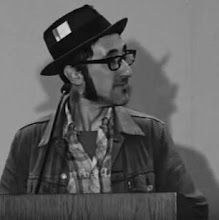
Turning the Corner
Tiger Stadium is long gone, but Detroit city officials remain tight-lipped on the future of Michigan and Trumbull.
By Dave Mesrey
Photo by Alan Truhan
It’s been more than a year now since the board of Detroit’s Economic Development Corporation voted 6-1 to demolish the Navin Field configuration of old Tiger Stadium. And it’s been almost nine months since the City of Detroit eradicated the entire structure.
“The thing was blight,” says George Jackson, president of the Detroit Economic Growth Corporation and the man largely responsible for demolishing the historic landmark. But it was hardly the City’s most pressing concern. According to Guernica magazine, there are 103,000 vacant lots in Detroit — 60,000 of which are City-owned. Those are staggering figures.
So what does the City have in mind for its most visible vacant parcel?
To date, the DEGC has yet to issue an RFP (request for proposal), despite its assertion that the 9-acre site is “extremely attractive to retail development” sans the stadium.
One idea is to keep the baseball diamond intact and transform the site into a public park. And some local baseball fans are eager to get a jump-start. Last month, as thousands of mourners paid tribute to Ernie Harwell, who lay in state at Comerica Park, a considerably smaller throng made the pilgrimage to Harwell’s old stomping grounds at the corner of Michigan and Trumbull for a spirited game of pickup baseball.
Over the last month, stadium admirers have been drawn to the field in an act of civil disobedience, willfully trespassing on City property in order to clean up what remains of their beloved ballfield, mowing its grass, pulling its weeds, raking its dirt.
Recently, someone even raised an American flag on the center-field flagpole, which, save for some scattered scrap metal, is the only remnant remaining of the old ballpark. But early on the morning of May 15, somebody took down the flag, apparently cutting the halyards in the process.
On the evening of May 26, some 20 interlopers armed with rakes and riding mowers (and a few with baseball gloves) entered the site of the old stadium through an open gate along Michigan Avenue. Detroit Economic Growth Corporation Vice President Waymon Guillebeaux, Jackson’s right-hand man and a key player in the stadium saga, slipped through the gates shortly before 6 o’clock.
Standing along the first-base line, Guillebeaux had an animated, yet amiable conversation with Tiger Stadium Fan Club co-founder Frank Rashid, who explained — rake in hand — that he and his comrades were doing no damage to the field; they were merely doing some much-needed landscaping.
To his credit, Guillebeaux allowed Rashid and company to finish what they’d started, even though Guillebeaux certainly could’ve filed a trespassing complaint. Moments later, two uniformed policemen came strolling onto the field. But they, too, opted to leave the interlopers alone.
The “grounds crew” not only cut the grass, they diligently raked the hardened earth around home plate and on (what’s left of) the pitcher’s mound, leaving the field in much better shape than they’d found it. The next day, however, someone posted “No Trespassing” signs.
Just days later, garbage could be seen strewn about inside the gates along Michigan Avenue.
The future of the Corner remains uncertain. Thom Linn’s Old Tiger Stadium Conservancy still has a dog in the hunt, but how much so remains unclear. The $3.8-million federal earmark that Sen. Carl Levin secured last year for Corktown’s redevelopment remains in play, but if nothing happens, those funds might soon revert to the U.S. Treasury. While that would certainly please some fiscally conservative lawmakers in Washington, it would no doubt disappoint denizens in Corktown.
Jeff DeBruyn, president of the Corktown Residents Council, says that the earmark could have a huge impact on his community. There are kids there, for instance, with no place to play. And Roosevelt Park, in the shadow of the abandoned Michigan Central Station, is in sore need of sprucing up.
No matter what becomes of the stadium site, Corktown, says DeBruyn, is eager to see something done there. And he wants to ensure that his community is engaged in the process. The Residents Council (which has expressed an interest in soccer) and the baseball stalwarts of the Conservancy might have different visions for the future of “the Corner,” but DeBruyn says he certainly respects the stadium’s history and hopes to work together with the Conservancy.
Whether working together or separately, the two groups seemingly have to win the approval of Jackson and the DEGC, which, Conservancy members maintain, hasn’t always been the most cooperative of partners.
But in another twist, Levin recently said that the Conservancy is drafting its redevelopment proposal, which they must then submit to the Department of Housing and Urban Development for approval.
The stadium site (not to mention the $3.8 million) is perhaps the most hotly contested plot of land in Michigan. And while the Conservancy and the Residents Council formulate their plans for reusing the field, some are clamoring for the space to be called “Harwell Park” in honor of late Tigers broadcaster Ernie Harwell.
More critical, perhaps, is whether a prospective developer can sustain something economically viable there — not simply honor the site’s history.
For now, the corner of Michigan and Trumbull sits as just another empty lot in a city rife with them.
# # #
Labels: Carl Levin, Corktown, DEGC, Detroit, Ernie Harwell, Old Tiger Stadium Conservancy
